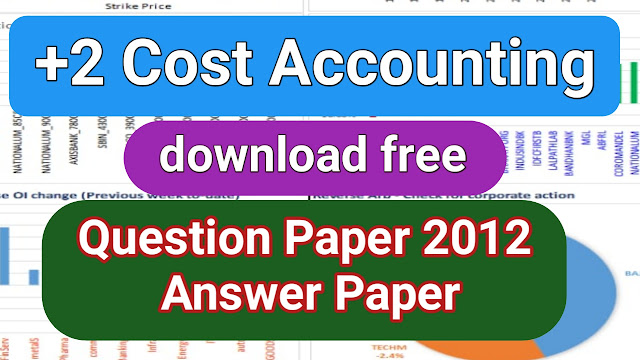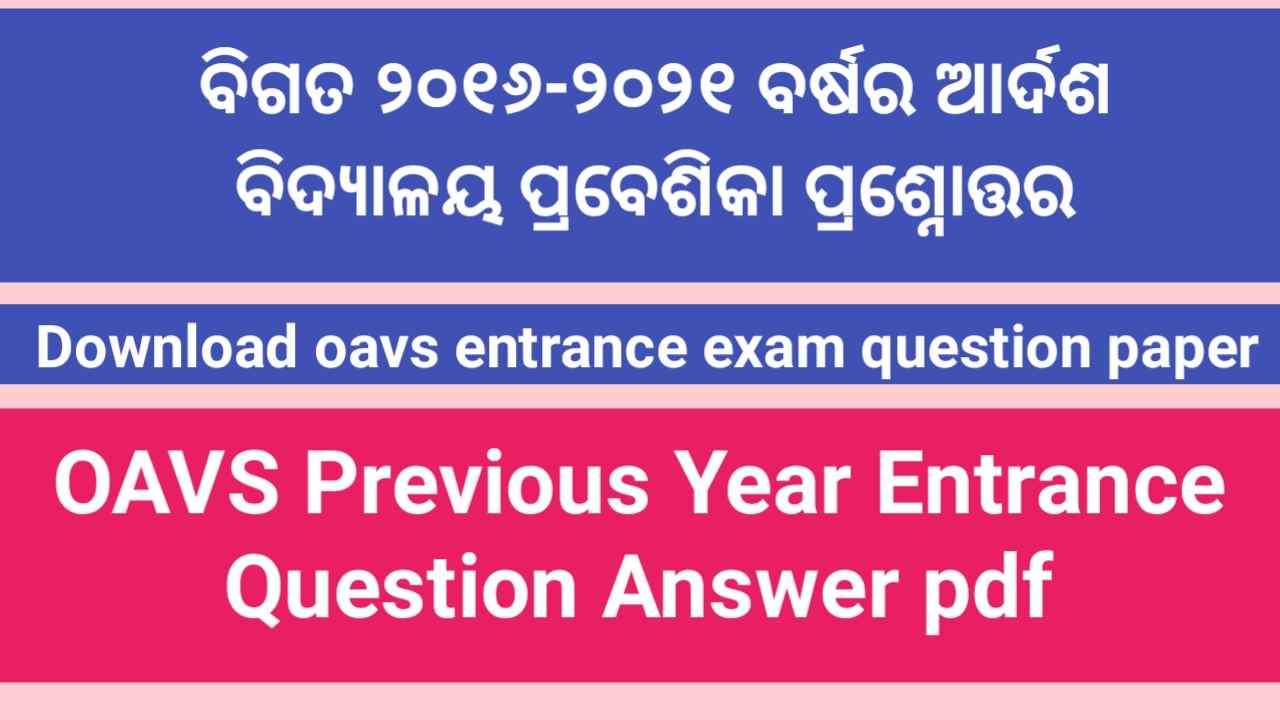Cost Accounting Question Paper 2012 for Commerce Stream Download PDF
Cost Accounting Question Paper 2012 for Commerce Stream Download PDF
Hello dear readers, welcome to online learn camp. In this post you can find out cost accounting question paper 2012 for commerce stream. This cost accounting question paper 2012 for Commerce stream was held in the year 2012 by chse odisha. Students of commerce stream had appeared in this exam by regular or ex-regular term. This Cost Accounting Question Paper 2012 for Commerce stream consist of both objective and descriptive question of total 100 marks. This Cost Accounting Question Paper 2012 for Commerce stream has also short type question and problem solving or prepared type question. Hope this cost accounting question paper 2012 would help students who are in plus 2 commerce stream for practice appear in next exam. Cost Accounting Question Paper 2012 for Commerce stream.
Cost Accounting Question Paper 2012 for Commerce stream
You will not be allowed to write during the first 15 minutes. This time is to be spent in reading the question paper. The time given at the head of this paper is the time allowed for writing the answers. The figures in the right-hand margin indicate marks. Carefully follow the instructions given in each Group. Cost Accounting Question Paper 2012 for Commerce stream Cost Accounting Question Paper 2012 for Commerce stream
Group - A
1. From the alternatives given below, each bit writes serially the correct answer along with its serial number:
(a) Bin Card is maintained by:
(i) Accounts Department
(ii) Stores Department
(iii) Cost Accounting Department
(iv) personnel Department
(b) The method of costing most suitable for medicine manufacturing industry is:
(i) Unit Costing
(ii) Process Costing
(iii) Batch costing
(iv) Contract Costing
(c) During the period of falling prices, the most suitable method of pricing of issue of materials is:
(i) Base Stock
(ii) F.I.F.O.
(iii) L.I.F.O.
(iv) Standard Price
(d) Loss arising out of rejected semi finished goods is called:
(i) Scrap
(ii) Shrinkage
(iii) Wastage
(iv) Spoilage
(e) A worker gets bonus of
(i) Halsey Premium plan
(ii) Halsey-Weir Plan
(iii) Rowan Plan
(iv) Profit- sharing Scheme
(f) The purchase requisition is generally
prepared in :
(i) Duplicate
(ii) Triplicate
(iii) Quadruplicate
(iv) Five copies
(g) Rent and rates come under:
(i) Fixed Overheads
(ii) Variable overheads
(iii) Semi-variable overheads
(iv) Semi-fixed overheads
(h) Production manager’s salary is:
(i) Factory overhead
(ii) Office overhead
(iii) Selling and distribution overheads
(iv) Administrative overhead
(i) Closure in seasonal industries, as a cause of idle time, comes under:
(i) Productive Cause
(ii) Administrative cause
(iii) Economic cause
(iv) Productive and administrative cause
(j) Recreational facilities come under:
(i) Pecuniary benefits
(ii) Fringe benefits
(iii) Deferred Monetary benefits
(iv) All the above benefits
2. Explain any five of the following terms serially in not more than three sentences each:
(a) Cost center
(b) Works cost
(c) Process Costing
(d) Labour turnover
(e) Overhead
(f) Piece Wage
(g) Overtime Wage
(h) Carrying Cost
3. Answer any five of the following questions serially in not more than three sentences each.
(i) What is meant by E. O. Q ?
(ii) What is Machine Hour Rate ?
(iii) How is Prime Cost determined ?
(iv) How do you identify direct material cost ?
(v) What is meant by Multiple Costing ?
(vi) If cost is rupees 90, 000 and profit is 10% of sales, what is the selling price ?
(vii) What are the purposes of Time Booking ?
(viii) What is meant by re-distribution of overhead?
Group – B
Q. 4. Answer any five of the following questions in not more than five sentences each.
(a) Give any six examples of Office and Administrative Overheads.
(b) State any three differences between Cost Accounting and Financial Accounting.
(c) State any three disadvantages of Time Rate Method of wage payment.
(d) Mention any three advantages of Piece Rate Method of remuneration.
(e) Explain Perpetual Inventory Control.
(f) State any three causes of Labour Turnover.
(g) What are the six ‘R’s in scientific purchasing ?
(h) Explain works overheads with examples.
Q. 5. Answer any five of the following questions limiting each short note to five sentences and each distinction to three differences.
(a) Write short notes on the following.
(i) Bin Card
(ii) Marginal Costing
(iii) ABC Analysis
(iv) Standard Time
(b) Distinguish between the following.
(i) Controllable Cost and Uncontrollable Cost.
(ii) Direct Labour and Indirect Labour.
(iii) Time keeping and Time Booking
(iv) Allocation and Apportionment of Overheads
Group – C
Answer any four of the following questions.
Q. 6. Define ‘Cost Accounting’. Explain its functions.
Q. 7. Explain any four techniques of material control.
Q. 8. Give the specimen of the following
(i) Purchase Requisition
(ii) Material Transfer Note
Q. 9. Enter the following transactions in the Stores ledger under LIFO method of pricing and find out the value of stock at the end of the period.
Purchase Unit Per Unit
3.1.2011 3, 000 14.00
18.1.2011 400 15.00
11.2.2011 5, 000 16.00
13.2.2011 1, 000 15.00
10.3.2011 4, 000 15.00
Issue Units
2.2.2011 2,000
14.2.2011 3,000
3.3.2011 1,000
11.3.2011 2,000
15.3.2011 3,000
Q. 10. A factory produces a standard product ‘B’ from the following information you are required to prepare a Cost sheet for March, 2011.
Raw –materials Consumed 2, 90,000
Direct Wages 1, 30,000
Other Direct Expenses 80,000
Factory Overheads are 80% of Direct Wages.
Office Overheads are 10% of Work Cost.
Selling and Distribution Expenses are rupees 2- per unit sold.
Units produced and sold during the month 10, 000.
Find out the selling price per unit keeping a profit of 20% of the selling price.
There was no stock of goods or work-in-progress either at the beginning or at the end of the period.
Q. 11. Calculate the Machine Hour Rate from the given particulars.
Per –Annum Rupees
Rent of the Department 23, 400
(Space occupied by the machine 1/5th)
Lighting 8, 640
(number of men in the Department is 12 and 2 work on this machine)
Insurance 1,080
Cotton Waste, Oil etc. 1,800
Salary of Foreman (1/4th of his time is
devoted to this machine) 1,80,000
The cost of the machine is rupees 2, 76, 000 and it has an estimated scrap value of rupees 6, 000. Its working life is estimated to be 10 years and it will run 1, 8000 hours per annum. The repair and maintenance expenditure on the machine per annum is estimated at rupees 33, 750. It will consume 5 units of power per hour at accost of rupees 2.40 per unit.
Q. 12. Make a comparative study of Halsey Premium and Rowan Plan with a suitable example.




Comments
Post a Comment